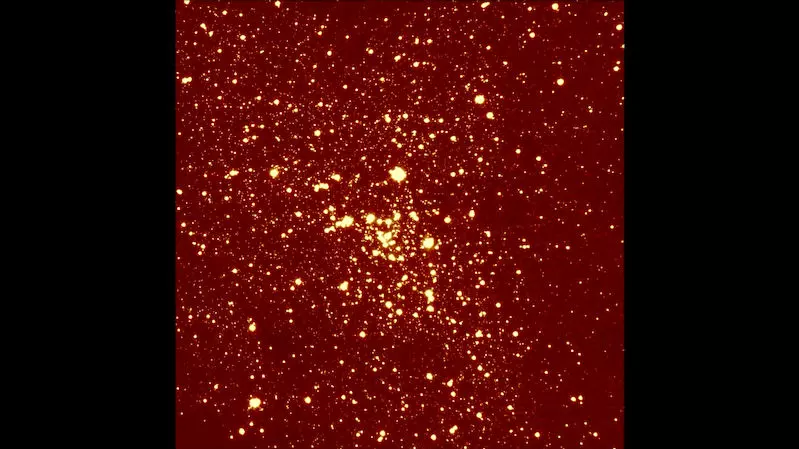When the star S4716 reaches its shortest distance of just 100 astronomical units (AU) from the four-million-solar-mass black hole, it is traveling at 8,000 km/s, or 2.7 percent of the speed of light. .
| An AU is about 150 million kilometers, the distance between the Earth and the Sun. |
All this was revealed by a study recently published by a professional journal Astrophysical Journal. It was attended by experts from Brno’s MUNI, the German Max Planck Institute for Radio Astronomy and the University of Cologne.
“Like tripping over a tall guy in a movie theater”
The black hole at the center of the Milky Way galaxy – the object named Sagittarius A* (Sgr A*) – is not isolated, it is surrounded by one of the densest star clusters, the so-called nuclear star cluster. Its center contains fast-moving stars, called S stars. These stars have different masses and luminosities.
“One of them – the S2 star – behaves like a big figure sitting in front of you in the movie, blocking your view of important things,” said Florian Piesker, lead author of the new study.
“Thus, the view to the center of our galaxy is often blocked by the very bright star S2. However, there are brief moments we can observe close to the central black hole,” he added.
The newly identified star S4716 (circled in green) and its compact orbit around the supermassive black hole at the center of the galaxy have the shortest period of 4 years. The bright S2 star (black circle) and its 16-year orbit are marked.
Photo: MUNI Faculty of Science
Advances in analytical methods and longer observing times over the past 20 years have allowed the star S4716 to be discovered and its four-year period confirmed.
In orbit, the star is close to the central black hole Sgr A* at a distance comparable to the dimensions of the Solar System, and the minimum distance – as already mentioned – is only about 100 AU. This is very low by astronomical standards, scientists point out.
A star in a stable orbit so close and so fast orbiting a supermassive black hole is “absolutely unexpected” and represents the limit of what can be reached with conventional telescopes.
A mysterious track
In addition, the discovery sheds new light on the origin and orbital evolution of fast-moving stars in the heart of the Milky Way.
“The short-period, compact orbit of the star S4716 is quite mysterious,” said astronomer Michael Zajacek of the MUNI Faculty of Science, who participated in the study.
“Stars cannot easily form close to a black hole – S4716 had to migrate inward, for example through a series of close approaches with other stars and objects in the S cluster, which caused its orbit to shrink significantly,” explained Zajaček.

Problem solver. Incurable bacon specialist. Falls down a lot. Coffee maven. Communicator.



